We are approaching the beginning of the astronomical winter, the time when we started our winter expeditions back in 2010-2011. The first question is: why in winter? And then I ask myself: why not in winter? In my evolution as a person and, in this case, more specifically, as a mountaineer, I decided to discover what winter would be like, I wanted to know how to act, what it would be like to climb a mountain in the Himalayas at the hardest and most challenging time of the year, when the mountains are at their most beautiful, and the winter purity and solitude trap you, where one has to be much more intelligent and astute.
This year, we decided to leave home on 29 November, and we have been at quite high altitudes since 2 December. We have slept at more than 5,000 metres on almost half a dozen nights, and we have been at 6,000 metres, that is, at high altitudes that make us much more confident.
If all goes well, we will leave Pokhara on the 21st of December in the direction of Dana to reach Humkhola. The journey is estimated to take about 6 hours by four-wheel drive. From there we will walk to the base camp, which, if I remember correctly, we set up at about 4,200 metres back in 2010.
For those who might think that climbing in winter, spring or autumn is the same thing, just with the uncertainty we have, I say little. In spring and autumn, it is certain to find water at base camp; however, in winter, we have doubts that we will be able to set up base camp at 4,200 metres, as, with hardly any rainfall in recent weeks, it is more than likely that there will not be enough snow, and on the plane where we plan to set up base camp at this time, it is not certain that the water will be flowing.
So the first question is where to set up base camp, which may be at about 3,800 metres, about 2 or 3 hours below where the base camp is usually set up, because there, at least, we are sure to find a lake. At that point, if we are 100% sure to find water or the same frozen lake.
The Annapurna that we will encounter in the coming days will be different from what we already know, because the mountains in the Himalayas change; Everest in the 3 attempts we made in winter was nothing like what we knew, as it was in the last 3 winters on Manaslu. The mountain is there, but it is not the same. However similar the conditions are, the wind, the accumulations of snow throughout the year, depending on how they have fallen, etc., make them change completely, they are different, but, at the same time, they are much more aesthetic.
If everything goes as it has so far, we will be arriving at base camp on 21 December, with the onset of astronomical winter, to set up the base camp, and, without further ado and with our knives between our teeth, as always, to work hard, in order to have a chance. If he grants it to us, well and good. If not, we know what this is all about, we need only look at our statistics. They are not very encouraging, but we know that, if they were easy, more people would be encouraged to visit them and the summits would even be reached more often in winter.
Here you can enjoy some pictures of the village of Nagual, at 3,600 metres, where we spent several nights. From there, we set off for Far Chulu East base camp at 4850m. We spent one night there before making our way to Hi Camp at 5,300m, making our way up, enjoying the solitude and the beautiful views. Finally, we slept in a last bivouac at 5,650 metres, where we spent a hard and terrible night, because the air was blowing very hard. This caused me to spend almost the whole night without sleeping because of the intensity of the air. The next destination was the summit ridge. There, the wind definitely stopped us. We know what this is all about, “when in doubt, the safest way”.
It was a privilege to share these moments with friends. It was a shame, because I was the one who decided to turn back, and I feel very sorry for Jabitxu, but that’s the thing about the mountains; you have to know how to turn back, especially when they are warning you at more than 75km/hour. There is a fine line between living and dying, and between being well and getting into trouble (real trouble). That is the real key to success.
I also leave you these pictures in which, together with Mattia and other friends, we have had a great time. I would like to encourage you to follow our next adventure.
As far as we know, only Denis Urubko has announced that he will attempt g1 in the winter. More than a decade ago, in 2010-2011, I enjoyed the historic g2 ascent of Cory, Denis and Simone, and I have nothing but words of encouragement for Denis, and good luck to each of the greatest himalayists of the moment. The same or more than we will need.
Between today and tomorrow we will gather the rest of the team that is now slightly scattered. This year we have the presence of Andres Navamuel as cameraman, who comes from the Khumbu trek, where he has learnt first-hand what altitude is like and the punishment it entails. Eneko lands tomorrow. So, the whole group will get together and we will go from 20 degrees in the sun in Pokhara, to enter Annapurna, a mountain that we already climbed on April 17, 2010.
Greetings to all of you, and cheers!
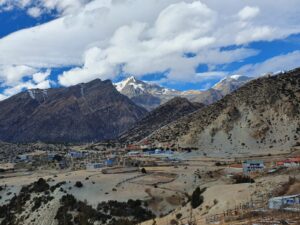
Photograph of the view from Nagwal at 3,600 meters in the Annapurna massif with the Chulus in the background.
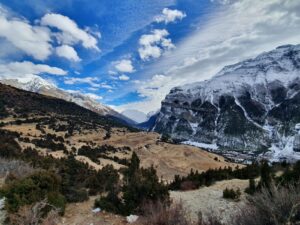
Views from Nagwal valley below. Beautiful sky
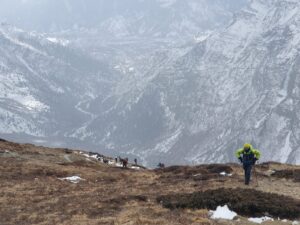
Mattia Conte and the rest of the team in ascent, at about 4,600 meters towards the 6,059 meters Far Chulu East Base Camp.
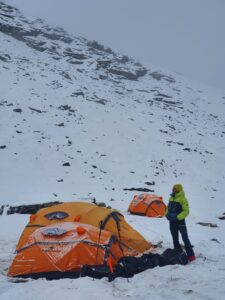
Mattia Conte at Far Chulu East Base Camp at 4,850 meters, with unstable weather and light snowfall.
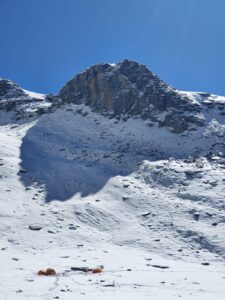
Location of the Far Chulu East Base Camp at 4,850 meters (15,000 feet)
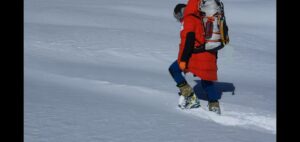
Alex Txikon, quite loaded, opening track from Base Camp to Hi Camp at 5,200 meters
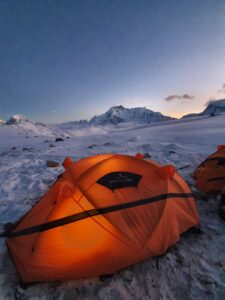
Hi Camp tents at 5,300 meters with Annapurna II in the background
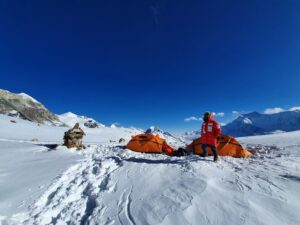
Alex at Hi Camp at 5,300 meters, behind Annapurna II
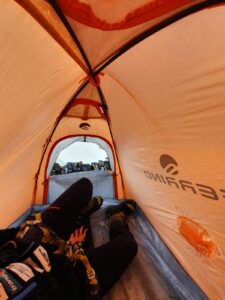
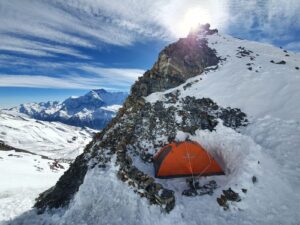
Bivouac at 5,650 meters
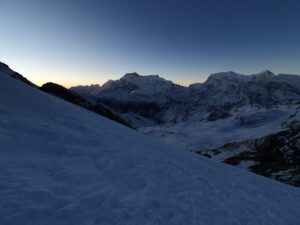
Sunrise above 5,800 meters
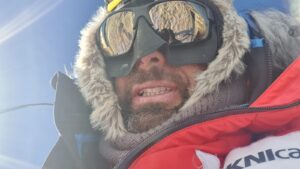
Suffering the harsh gusts of more than 70 km per hour
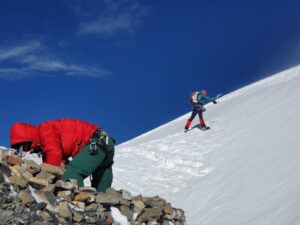
Jabitxu and Ang-Gyalu reaching the bivouac at 5,650 meters
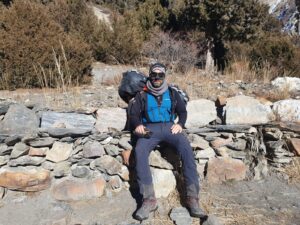
Alex after spending the night in the bivouac at 5,650 meters with the rest of the team carrying more than 40 kg in yak Kharka. No matter how hard you try to achieve your goal, no matter how hard you try it will probably not be enough, as it was in our case. But it has served as motivation and we had a great time
